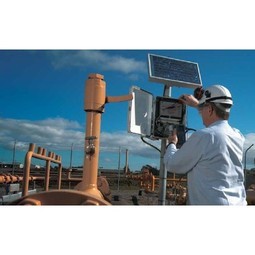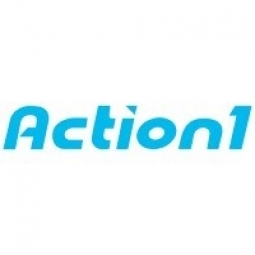Technology Category
- Platform as a Service (PaaS) - Application Development Platforms
- Platform as a Service (PaaS) - Device Management Platforms
Applicable Industries
- Equipment & Machinery
- Utilities
Applicable Functions
- Maintenance
Use Cases
- Construction Management
- Time Sensitive Networking
About The Customer
Razzoo’s Cajun Cafe is a restaurant chain that passionately creates bold, flavorful, Cajun-inspired dishes that bring to life all the flavor, fun, and festivity of New Orleans and the French Quarter. Founded in Dallas in 1991, Razzoo’s operates 22 restaurants in TX, OK, and NC. The restaurant’s IT infrastructure includes a data center and 200 endpoints scattered across the central office and remote locations. The company is privately owned and its headquarters are located in Addison, TX, USA.
The Challenge
Razzoo’s Cajun Cafe, a restaurant chain with 22 locations across TX, OK, and NC, faced a significant challenge in managing its IT operations. The restaurant’s IT infrastructure included a data center and 200 endpoints scattered across the central office and remote locations. The company needed better visibility and control over its corporate endpoints to ensure the success of its restaurants. The existing system involved multiple applications and utilities, which made it difficult to manage. The company needed a secure, reliable tool that could provide access to remote locations, support the restaurants, and meet compliance standards.
The Solution
Razzoo’s Cajun Cafe adopted Action1, a cost-effective, all-in-one platform that addressed all their remote IT management needs. The platform provided the team with an understanding of all company endpoints, including some devices they were previously unaware of. It also enabled them to easily control and manage the endpoints. They could remotely access users’ computers, keep all company endpoints up to date, get granular reports on software and hardware assets, deploy software, and run PowerShell scripts — all with a single tool. Action1’s built-in remote desktop significantly reduced the time required to access users’ computers. The platform also allowed the team to manage endpoints in bulk, run commands and PowerShell scripts on all endpoints or specific groups of endpoints on schedule, and set up policies to execute those actions automatically if certain conditions were met.
Operational Impact
Quantitative Benefit

Case Study missing?
Start adding your own!
Register with your work email and create a new case study profile for your business.
Related Case Studies.

Case Study
Smart Water Filtration Systems
Before working with Ayla Networks, Ozner was already using cloud connectivity to identify and solve water-filtration system malfunctions as well as to monitor filter cartridges for replacements.But, in June 2015, Ozner executives talked with Ayla about how the company might further improve its water systems with IoT technology. They liked what they heard from Ayla, but the executives needed to be sure that Ayla’s Agile IoT Platform provided the security and reliability Ozner required.

Case Study
IoT enabled Fleet Management with MindSphere
In view of growing competition, Gämmerler had a strong need to remain competitive via process optimization, reliability and gentle handling of printed products, even at highest press speeds. In addition, a digitalization initiative also included developing a key differentiation via data-driven services offers.

Case Study
IoT Solutions for Smart City | Internet of Things Case Study
There were several challenges faced: It is challenging to build an appliance that can withstand a wide range of voltage fluctuations from as low at 90v to as high as 320v. Since the device would be installed in remote locations, its resilience was of paramount importance. The device would have to deal with poor network coverage and have the ability to store and re-transmit data if networks were not available, which is often the case in rural India. The device could store up to 30 days of data.

Case Study
Predictive Maintenance for Industrial Chillers
For global leaders in the industrial chiller manufacturing, reliability of the entire production process is of the utmost importance. Chillers are refrigeration systems that produce ice water to provide cooling for a process or industrial application. One of those leaders sought a way to respond to asset performance issues, even before they occur. The intelligence to guarantee maximum reliability of cooling devices is embedded (pre-alarming). A pre-alarming phase means that the cooling device still works, but symptoms may appear, telling manufacturers that a failure is likely to occur in the near future. Chillers who are not internet connected at that moment, provide little insight in this pre-alarming phase.

Case Study
Automation of the Oguz-Gabala-Baku water pipeline, Azerbaijan
The Oguz-Gabala-Baku water pipeline project dates back to plans from the 1970’s. Baku’s growth was historically driven by the booming oil industry and required the import of drinking water from outside of the city. Before the construction of the pipeline, some 60 percent of the city’s households received water for only a few hours daily. After completion of the project, 75 percent of the two million Baku residents are now served around the clock with potable water, based on World Health Organization (WHO) standards. The 262-kilometer pipeline requires no pumping station, but uses the altitude differences between the Caucasian mountains and the capital to supply 432,000 m³/d to the Ceyranbatan water reservoir. To the people of Baku, the pipeline is “the most important project not only in 2010, but of the last 20 years.”

Case Study
GPRS Mobile Network for Smart Metering
Around the world, the electricity supply industry is turning to ‘smart’ meters to lower costs, reduce emissions and improve the management of customer supplies. Smart meters collect detailed consumption information and using this feedback consumers can better understand their energy usage which in turn enables them to modify their consumption to save money and help to cut carbon emissions. A smart meter can be defined in many ways, but generally includes an element of two-way communication between the household meter and the utility provider to efficiently collect detailed energy usage data. Some implementations include consumer feedback beyond the energy bill to include online web data, SMS text messages or an information display in consumers’ premises. Providing a cost-effective, reliable communications mechanism is one of the most challenging aspects of a smart meter implementation. In New Zealand, the utilities have embraced smart metering and designed cost effective ways for it to be implemented. The New Zealand government has encouraged such a move to smart metering by ensuring the energy legislation is consistent with the delivery of benefits to the consumer while allowing innovation in this area. On the ground, AMS is a leader in the deployment of smart metering and associated services. Several of New Zealand’s energy retailers were looking for smart metering services for their residential and small business customers which will eventually account for over 500,000 meters when the multi-year national deployment program is concluded. To respond to these requirements, AMS needed to put together a solution that included data communications between each meter and the central data collection point and the solution proposed by Vodafone satisfied that requirement.







